by Isabelle Hore-Thorburn // Apr. 25, 2023
Content Guidance: The exhibition addresses colonial violence. First Nations and Great Ocean Indigenous community members are advised that people mentioned in writing or depicted in artworks may have passed away.
For almost two decades, Indigenous artist Daniel Boyd has confronted and disrupted the misrepresentations of colonial narratives that comprise the history of so-called Australia. Working on Gadigal Wangal country/Sydney, Boyd has engaged transnational networks of resistance, Indigenous knowledge production and personal family histories to produce a vital body of work that foregrounds the experiences of First Nations people.
Now, in the most comprehensive exhibition of his artistic practice in Europe to date, 44 paintings are staged alongside two large-scale installations as part of ‘Rainbow Serpent (Version).’ Drawing on post-colonial philosopher Édouard Glissant’s concept of “the right to opacity and difference,” Boyd invites visitors to Gropius Bau in Berlin to contend with the most brutal excesses of imperial domination, the role that slavery played in the formation of Australia and the Eurocentric narratives that maintain the nation-building project.
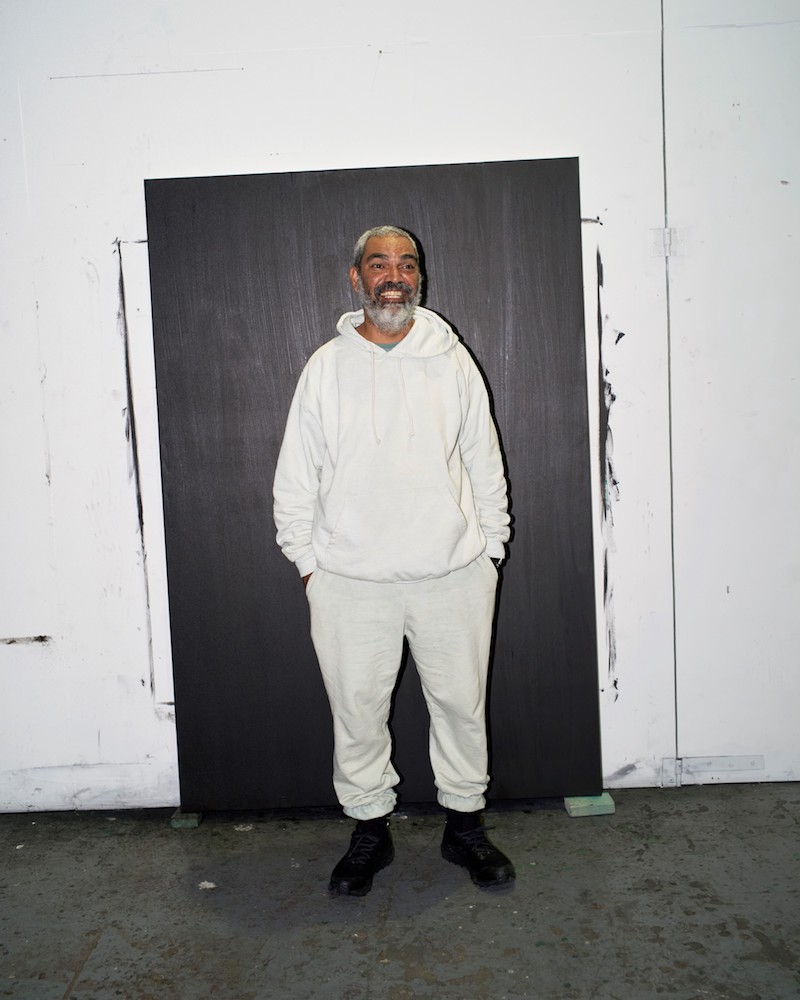
Daniel Boyd, artist portrait // Photo by Tobias Rowles
Robert Louis Stevenson’s ‘Treasure Island,’ Boyd’s personal family histories and the visual iconography of European classicism provide departure points for a European audience to consider ideas of inheritance, theft and authorship of land, and extractivism, as they relate to Australia’s colonial histories. Through tiny glue dots or “lenses,” Boyd’s paintings allow more complicated, fragmented truths to emerge.
Meanwhile, the non-linear exhibition offers multiple vantages to engage with the exhibit’s staggering floor installation. Walking barefoot over the mirrored apertures that sheath the dark atrium, audience members are made keenly aware of their relationship to the architecture of the building and to each other. Viewed from the first floor, the atrium floor resembles an abyss, simultaneously reflecting a trembling reflection of the building’s austere architecture and offering an invitation into the void.
Throughout the exhibition, Boyd employs darkness, Gestalt theory and his signature lens design to prioritise Blackness over the inherited ideas of European Enlightenment and transparency. In doing so, he creates a space for ambiguity, where knowledge is fluid and can be exchanged without losing one’s sense of self.
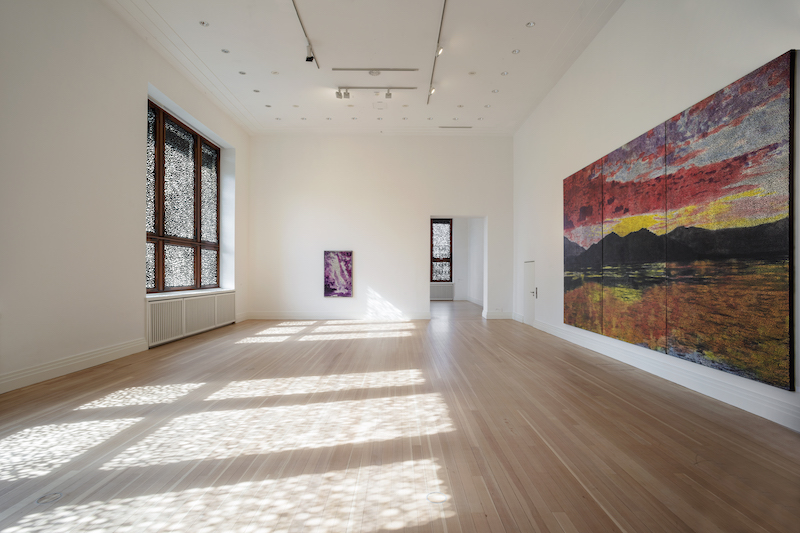
Daniel Boyd: ‘Rainbow Serpent (Version),’ 2023, installation view, Gropius Bau // Photo by Luca Girardini
Isabelle Hore-Thorburn: Within the imposing neoclassical architecture of Gropius Bau, ‘Rainbow Serpent (Version)’ encourages many paths and points of entry. Can you talk about how you used the language of the building to talk about imperial expansion and its effect on First Nations people?
Daniel Boyd: First of all, it’s about centring the Black voice. It’s about humanizing the Black voice in a way that historically hasn’t been afforded to First Nations people or people who have been colonized because of imperialism.
I wanted to think about amalgamating all these histories and not just presenting the colonizing understanding of the self and the human body. The architecture was a way for me to enable a response to placemaking on the frontier and how that trauma of placemaking exists and lingers in places like Australia.
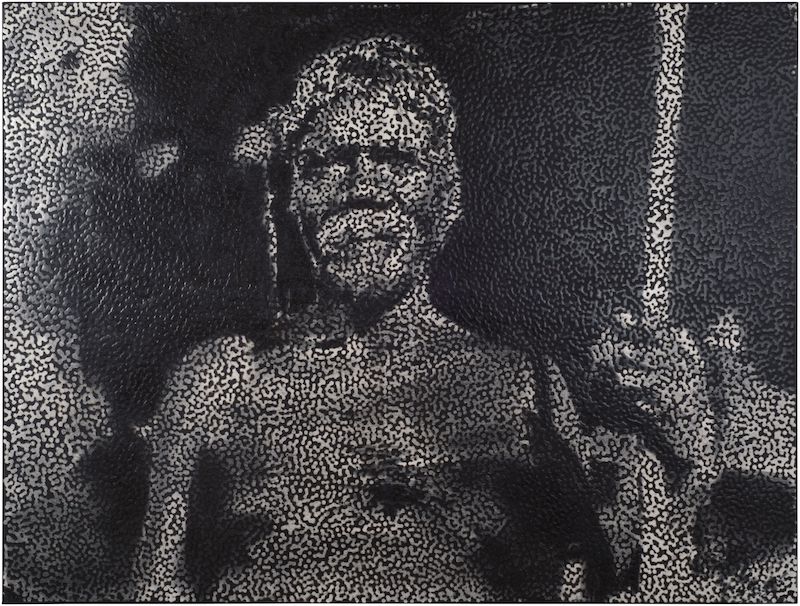
Daniel Boyd: ‘Untitled (MLBATS),’ 2021, oil and archival glue // Courtesy of the artist and Kukje Gallery
IHT: How have you used darkness and opacity to refuse imperial categorization and the extractive impetus of colonialism?
DB: It’s obviously connected to the economic structures of extraction. I think that’s why I speak about land and who has the right to authorship of that land, and what opportunity is there to connect that is beyond the monetary value of a piece of land?
[Extraction] is a part of it, but everything is a part of it, in a way. To define it through a singularity denies a poetic transference. [Darkness and opacity] allow a connection across time and space and for people to appreciate how they relate to something that they don’t fully understand. It offers a connection to the complexity of human experience.
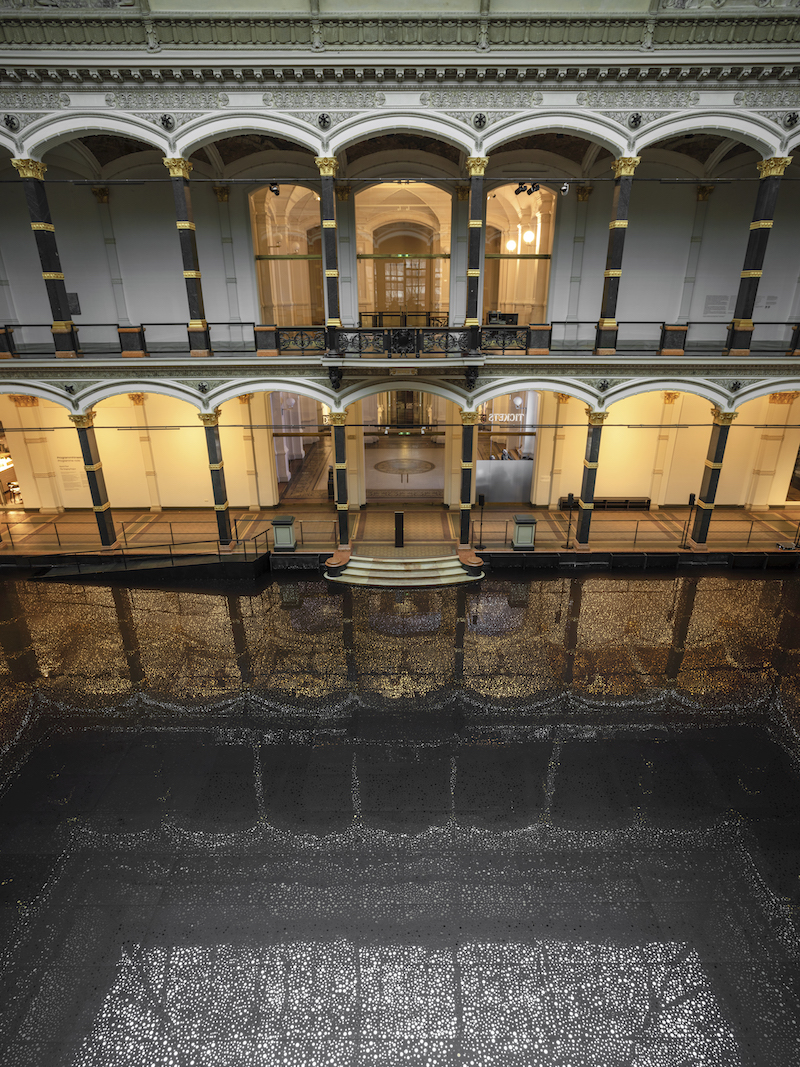
Daniel Boyd: ‘Rainbow Serpent (Version),’ 2023, installation view, Gropius Bau // Photo by Luca Girardini
IHT: How does this play out across the mirrored second skin that engulfs the atrium?
DB: There’s no hierarchy. It’s trying to bring equity to centring yourself in relation to the Other. So, you hold onto yourself through this opacity or the denial of Enlightenment traditions of transparency. Hopefully, this will allow multiple entry points into this theatre so that people understand their authorship in the world and how they can be a part of a diverse, non-hierarchical existence.
It will be activated in different ways, allowing a visceral experience to talk about philosophy, poetry or oration. The kind of traditions that First Nations people in this country are connected to over 60,000 years of artistic traditions that express our connection to different ways of thinking about time and the poetic nature of how we, as First Nations people, have transferred these traditions through song, dance and through [art] making. It’s in opposition to the Western linear model.
It’s thinking about how ideas move back and forth through time and space and how we can contend with chaos and understand the beauty within it.
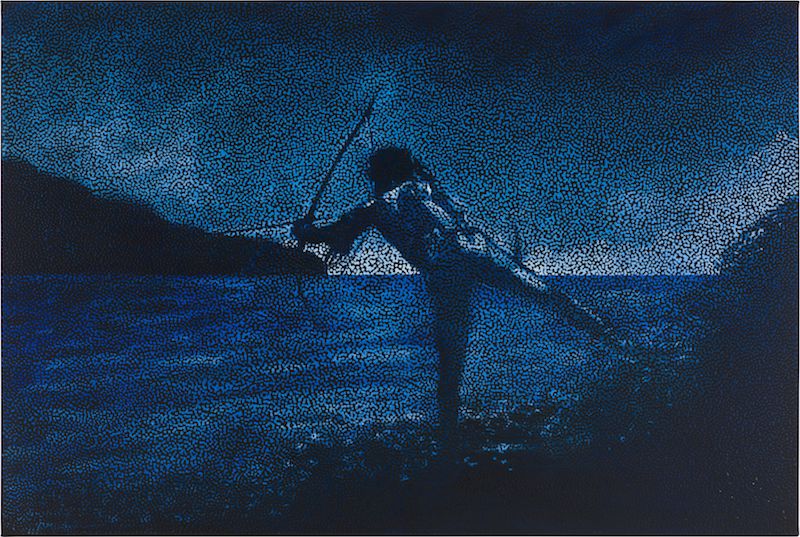
Daniel Boyd: ‘Untitled (PAITA),’ 2022, oil and archival glue on canvas // Courtesy of the artist and Roslyn Oxley9 Gallery, Sydney
IHT: You also look at the trajectories of objects in time and space and the accumulation of association.
DB: At the Venice Biennale, I presented four paintings referencing a Marshall Islands navigation chart. The Marshallese would memorise these stick charts and would learn to navigate the swell and the currents and to understand how they were situated in space.
As a young navigator, you would be taken out into the ocean in a canoe and then left there, and you would have memorised these charts to find your way. This particular navigation chart was gifted to Robert Louis Stevenson. So all of the works within the Venice Biennale were about the idea of ‘Treasure Island.’
So there is this understanding of how an object can go from what it was used for originally, how it moves into an author’s sphere and how people then understand it within a collection of objects in Samoa or wherever it ended up. But, then, how it goes to auction in New York and ends up at Penn State University, and how this object exists in all these places are different.
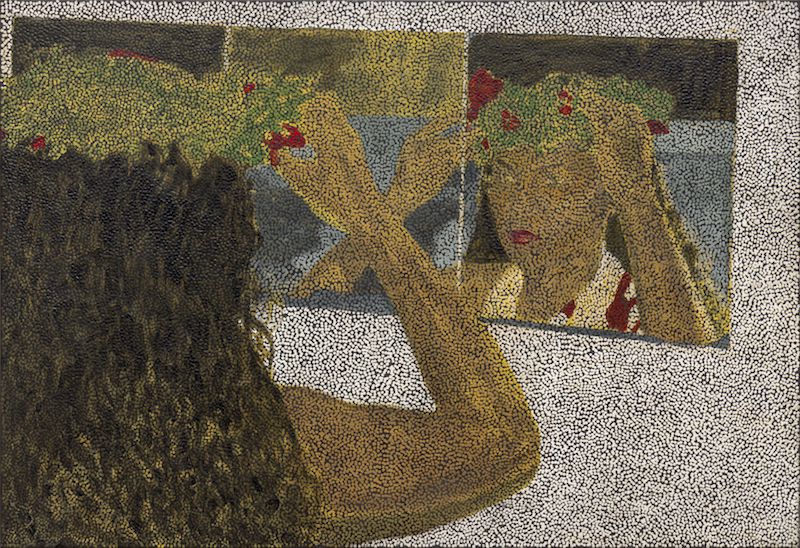
Daniel Boyd: ‘Untitled (TDHFTC),’ 2021, charcoal and archival glue // Courtesy of Kukje Gallery, Photo by Chunho An
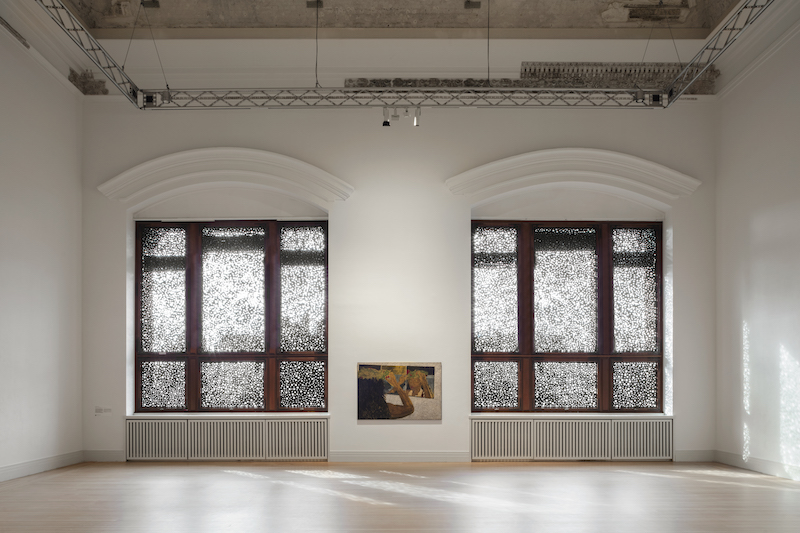
Daniel Boyd: ‘Rainbow Serpent (Version),’ 2023, installation view, Gropius Bau // Photo by Luca Girardini
IHT: You look at the trade of enslaved people that occurred between Vanuatu and Australia in ‘Untitled (FAIALSD)’ (2019). Can you talk about how this relates to Édouard Glissant’s concept of exchange and the abyss?
DB: Slavery existed in this country, and no one speaks about it. It’s not acknowledged as something that helped develop the economy of Australia. It’s wealth extraction. It’s not just about the land; it’s about the people too: First Nations communities and people that were brought from outside these countries. It isn’t acknowledged that economic capital exists because of this free labour force. I think a European audience hasn’t had to contend with these stories: It’s about the unknown. It can be on a really intimate level, a connection you have, or a relationship that you have to the surface of the works.
It can relate to larger things. And it’s about acknowledging the unknown and what has been kept from you. The abyss is making that space a part of how we perceive something. The way that this language sits on the surface allows for the duality to be present, a multiplicity and different entry points. You have to acknowledge what isn’t there as well as what you are trying to contend with.
Exhibition Info
Gropius Bau
Daniel Boyd: ‘Rainbow Serpent (Version)’
Exhibition: Mar. 24–July 9, 2023
berlinerfestspiele.de
Niederkirchnerstraße 7, 10963 Berlin, click here for map


























